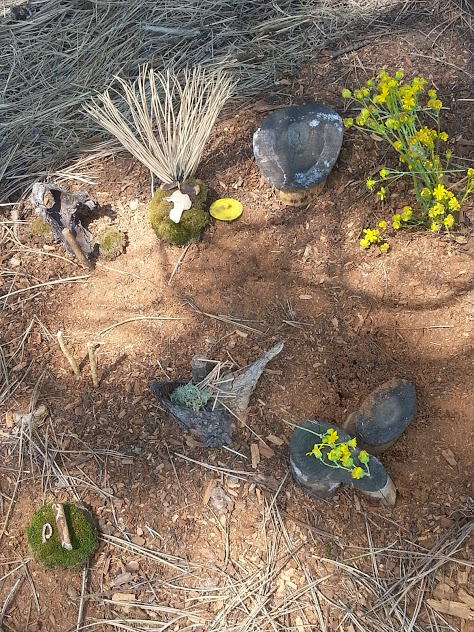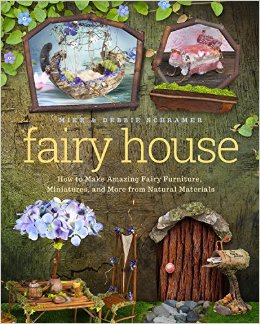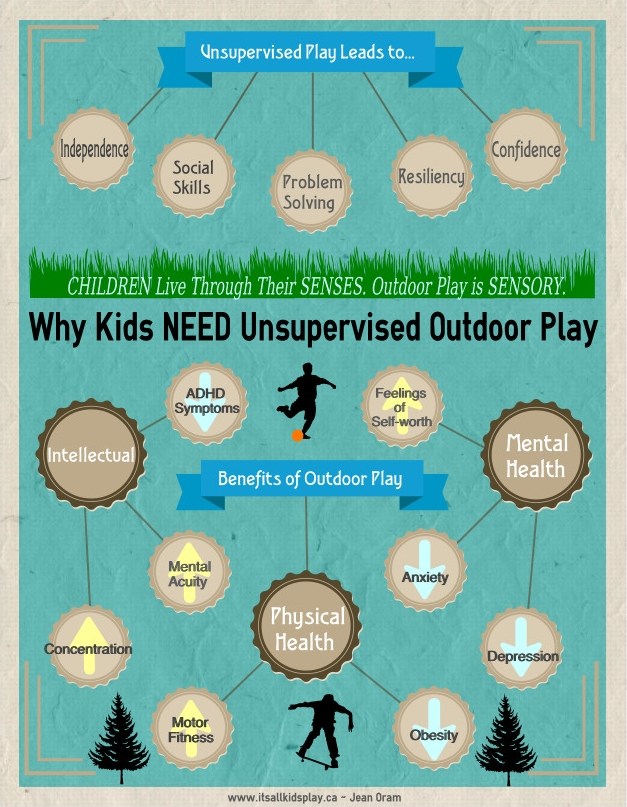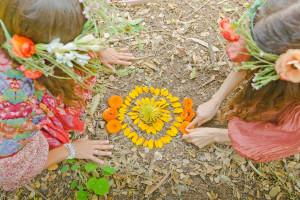All posts tagged Garden
Unsupervised play in nature – Leave them alone!
Why have kids play and explore in nature? Because they already know what to do there – not instructions required. Kids are hard wired to know how to play outside, it is only we adults who interrupt their potential while they are explore. We do this out of our own fears but what if we allow these young explores to take over and investigate all on their own? Just think of what they might come up with. Beyond playing out in a natural environment what if you are interested in building a playground in the back yard for the kids? consider building one out of natural materials. You can keep it simple and put up a few tree stumps to offer space for imaginative play.

You could create structures that are more complex and offer a fort like set ups so kids feel like they are in their own land and are able to invent new games with new rules. They can build characters and use their imaginations to create whole new worlds.

Mix nature with richer character development and storytelling by creating an outdoor structure that is a puppet theater combined with a beverage stand or Lucy from Peanut’s Advise stall. Let kids decide how they want to incorporate nature into the story they tell and how they see the world.

Next time you think “should I let the kids play an hour more on their tech or should I take them to a nearby playground?” consider how healthy it is for kids to have unsupervised, creative outdoor play. Leave them alone because they know what to do out there, just like you did when you where a kid.
SUMMER SOLSTICE
Celebrating Summer Solstice is a great way to connect kids with nature as Solstice highlights the transitions in nature. Crops are starting to grow, daylight is at its peak and the weather in most locations is inviting.
Ideas to celebrate the MidSummer Solstice:
FEAST – Eat local and seasonal foods -Â Visit a farmers market
FLOWERS – Pick some fresh outside, visit a florist, Research legends about flowers
FIRE – Have a Bonfire -Â According to old pagan traditions, the bonfires would to scare off witches and other evil creatures during the Solstice.
SCIENCE – Learn more about Phenology - the study of cyclic and seasonal natural phenomena, especially in relation to climate and plant and animal life.
ART and CRAFT – Make Solstice Slime, Fire Flies in a Jar, Hair flower wreath, A Sun Wheel
June Solstice: Longest and Shortest Day of the Year

Solstice is Monday, June 20, 2016Â
A solstice happens when the sun’s zenith is at its furthest point from the equator. On the June solstice, it reaches its northernmost point and the Earth’s North Pole tilts directly towards the sun, at about 23.4 degrees. It’s also known as the northern solstice because it occurs when the sun is directly over the Tropic of Cancer in the Northern Hemisphere.
Meaning of Solstice
‘Solstice’ (Latin: ‘solstitium’) means ‘sun-stopping’. The point on the horizon where the sun appears to rise and set, stops and reverses direction after this day. On the solstice, the sun does not rise precisely in the east, but rises to the north of east and sets to the north of west, meaning it’s visible in the sky for a longer period of time.
Although the June solstice marks the first day of astronomical summer, it’s more common to use meteorological definitions of seasons, making the solstice midsummer.

Stonehenge in England. ©bigstockphoto.com/dubassy
Every summer we go camping and spend days, weeks and even months outside playing in nature. And every summer my girls and their friends build outdoor habitats for the magical, mysterious creatures known as fairies. They will spend hours find items in nature that can serve as ‘beds’, ‘tables’ and ‘food’.

We encourage magic and mystery with the kids while they are in their natural surroundings. Imaginative play through constructing outdoor fairy houses from natural materials such as bark, sticks, stones, flowers, grasses, acorns and pine cones; along with small pieces of trash they find around the camp site like bottle caps, broken sunglasses, pieces of plastic. We use this collection time to have conversations with our mini architects to talk about preserving nature and not littering. We talk about how harmful it is to birds and water life when people don’t properly dispose of their garbage.

When building a fairy house think about all of the possibilities: such as creating a pebble path, making a fence out of sticks, a walnut-shell bathtub, leaf hammock, a bark bed or a stone table.

You can do this in your own back yard, at a playground or even in a container filled with dirt on a balcony of an apartment. You need only to get outside, take a walk, carry a bag or a bucket and collect things. Bring back the found goodies to the place you will construct and begin the process to create a welcoming home for fairies.
Want more ideas? Check out these books – they are some of our favorites:

Fairy House: How to Make Amazing Fairy Furniture, Miniatures, and More from Natural Materials
This week I am kicking off a summer long series inspired by our love of STEAM and nature. I will focus on all kinds of ways to get kids out of the house and off of their tech this summer. It can be hard for working parents to take kids out so I am going to give examples of quick walks, small container planting, and ‘gulp’ . . . unsupervised play.
Want to get started with planning to keep you kids from getting Nature-Deficit Disorder this summer? Start here and read Richard Louv‘s book Last Child in the Woods: Saving Our Children From Nature-Deficit Disorder
From the book:
“I like to play indoors better ’cause that’s where all the electrical outlets are,” reports a fourth-grader. Never before in history have children been so plugged in-and so out of touch with the natural world. In this groundbreaking new work, child advocacy expert Richard Louv directly links the lack of nature in the lives of today’s wired generation-he calls it nature deficit-to some of the most disturbing childhood trends, such as rises in obesity, Attention Deficit Disorder (Add), and depression. Some startling facts: By the 1990s the radius around the home where children were allowed to roam on their own had shrunk to a ninth of what it had been in 1970. Today, average eight-year-olds are better able to identify cartoon characters than native species, such as beetles and oak trees, in their own community. The rate at which doctors prescribe antidepressants to children has doubled in the last five years, and recent studies show that too much computer use spells trouble for the developing mind. Nature-deficit disorder is not a medical condition; it is a description of the human costs of alienation from nature. This alienation damages children and shapes adults, families, and communities. There are solutions, though, and they’re right in our own backyards. Last child in the Woods is the first book to bring together cutting-edge research showing that direct exposure to nature is essential for healthy childhood development-physical, emotional, and spiritual. What’s more, nature is a potent therapy for depression, obesity, and Add. Environment-based education dramatically improves standardized test scores and grade point averages and develops skills in problem solving, critical thinking, and decision making. Even creativity is stimulated by childhood experiences in nature.
 Outdoor Dance Party!
Outdoor Dance Party!
Let’s make this the summer of outdoor play and exploration. We need more scientists and engineers and artists who are inspired by nature. The Children and Nature Movement is forming – Want to know more about how you can get involved? Click HERE




